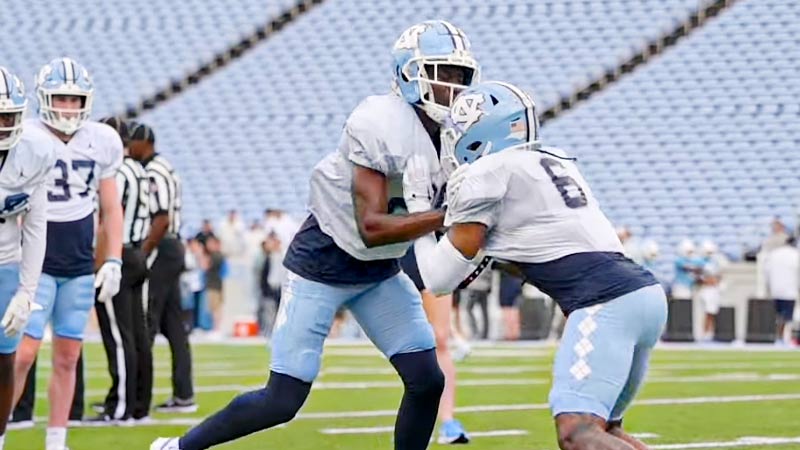In the intricate world of American Football, the defensive backfield stands as a critical battleground where the art of coverage, anticipation, and resilience come together.
This specialized unit of players, known as defensive backs (DBs), holds the fort against the opposition’s passing onslaught while providing vital support against the run.
From cornerbacks shutting down receivers to strong safeties bolstering the line of defense, the defensive backfield is a realm where skills and strategy intertwine.
In this blog post, we delve into the heart of the football defensive backfield, uncovering its nuances, responsibilities, and the essential skills that make it a vital component of every defensive scheme. Stay focused.
What Is Football Defensive Backfield?
In American Football, the defensive backfield refers to the group of players known as defensive backs (DBs) who play a crucial role in the defense strategy. DBs are responsible for preventing touchdowns and disrupting the opponent’s passing game.
If defensive linemen or linebackers miss tackles, DBs serve as the last line of defense to thwart potential scoring plays. Their primary task involves covering wide receivers, tight ends, and running backs, effectively neutralizing passing threats by denying downfield receptions.
By employing a mix of coverage techniques, agility, and anticipation, DBs aim to intercept passes, deflect throws, and limit the opponent’s offensive progress.
Their presence and strategic positioning play a pivotal role in maintaining defensive integrity and minimizing the opponent’s scoring opportunities.
Roles and Responsibilities of Defensive Backfield Players
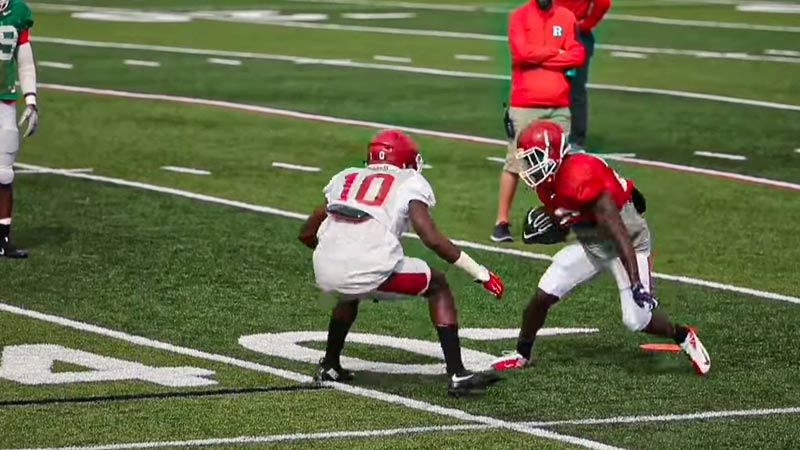
Defensive backfield players, commonly referred to as defensive backs (DBs), have distinct roles and responsibilities in American Football’s defensive strategy. Their tasks include:
Coverage
DBs are primarily responsible for covering the opposing team’s wide receivers, tight ends, and running backs during passing plays. They use techniques like man-to-man coverage, zone coverage, and press coverage to disrupt routes and limit passing options.
Preventing Big Plays
DBs must prevent long passes and deep completions by staying in position and effectively reading the quarterback’s intentions. Their goal is to break up passes, intercept the ball, or force incomplete throws.
Tackling
While tackling might not be their primary role, DBs must be skilled tacklers to stop ball carriers who break through the defensive line or linebackers. Good tackling prevents opponents from gaining extra yards after a catch.
Zone Defense
In zone coverage, DBs are responsible for specific areas of the field rather than individual receivers. They collaborate to cover zones and react to receivers entering their zones, aiming to disrupt passing lanes and potential receptions.
Man-to-Man Defense
In man coverage, DBs are assigned specific offensive players to cover throughout the play. They closely shadow their assigned receiver, aiming to deny passes and create tight coverage situations.
Press Coverage
This involves DBs physically engaging receivers at the line of scrimmage, disrupting their routes and timing. It’s a proactive strategy to disrupt the offense’s rhythm and timing.
Interceptions
DBs aim to intercept passes by reading the quarterback’s eyes, anticipating routes, and making quick, well-timed jumps on the ball. An interception can shift momentum and provide a turnover opportunity for the defense.
Defending Against Runs
DBs also play a role in defending against running plays by assisting in containing outside runs and providing support to the front seven defenders.
Communication
Effective communication within the defensive backfield is crucial. DBs signal coverage assignments, adjust to offensive formations, and communicate changes in strategy based on the game situation.
Adaptation
DBs need to quickly adjust their coverage based on the offensive formation, down and distance, and the overall game situation. Flexibility is key to counteracting the offense’s tactics.
Special Teams Contributions
Some DBs contribute on special teams units, participating in kick and punt coverage, as well as return teams.
Cornerback in Defensive Backfield
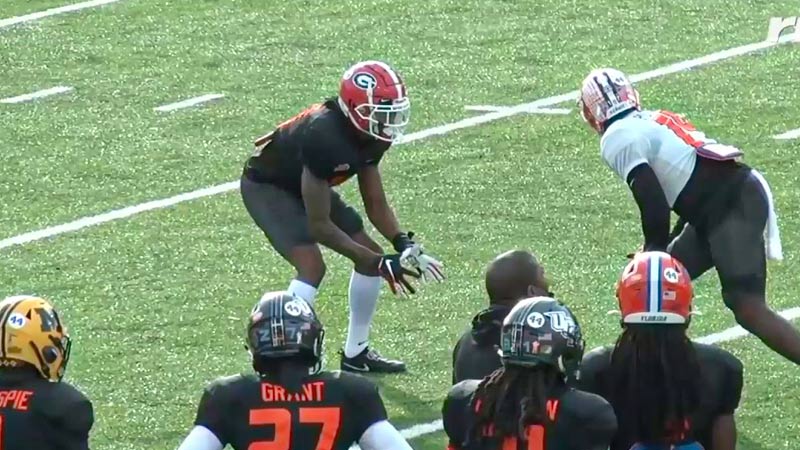
A cornerback (CB) is a specific position within the defensive backfield in American Football.
Cornerbacks play a crucial role in defending against the opposing team’s passing game and are tasked with covering wide receivers, disrupting routes, and preventing successful passes downfield. Here are the key responsibilities and attributes of cornerbacks:
Coverage Skills
Cornerbacks excel in coverage techniques, including man-to-man coverage, zone coverage, and press coverage. Their ability to stay close to receivers and anticipate their movements is essential for limiting passing options.
Man-to-Man Coverage
Cornerbacks often match up one-on-one with specific wide receivers. They use their speed, agility, and physicality to shadow the receiver’s movements and prevent them from getting open.
Zone Coverage
In zone schemes, cornerbacks cover specific areas of the field. They read the quarterback’s eyes and react to passes entering their zone, aiming to break up the play or make interceptions.
Press Coverage
Cornerbacks use press techniques to disrupt the timing of the receiver’s route. They engage the receiver at the line of scrimmage, attempting to redirect their path and throw off the timing between the quarterback and receiver.
Ball Skills
Cornerbacks possess strong ball skills, including the ability to locate the ball in the air, make interceptions, and break up passes at the last moment.
Speed and Agility
Quickness and agility are vital for cornerbacks, enabling them to react swiftly to changes in direction and keep up with fast-moving receivers.
Recovery Skills
Even if a receiver gains separation initially, cornerbacks need the speed and recovery skills to catch up and make plays on the ball.
Tackling
While tackling might not be their primary role, cornerbacks must be effective tacklers to prevent receivers from gaining extra yards after making a catch.
Anticipation
Cornerbacks must anticipate the receiver’s route and the quarterback’s throw, positioning themselves to make plays on the ball.
Reading Formations
They analyze offensive formations, recognizing potential threats and adjusting their positioning accordingly.
Communication
Cornerbacks communicate with fellow defensive backs to ensure proper coverage assignments and adjustments based on offensive formations and pre-snap reads.
Mental Toughness
Playing cornerback requires mental resilience, as they often face challenging matchups against talented wide receivers. They need to bounce back from plays where they might get beaten.
Strong Safety Position in the Defensive Backfield
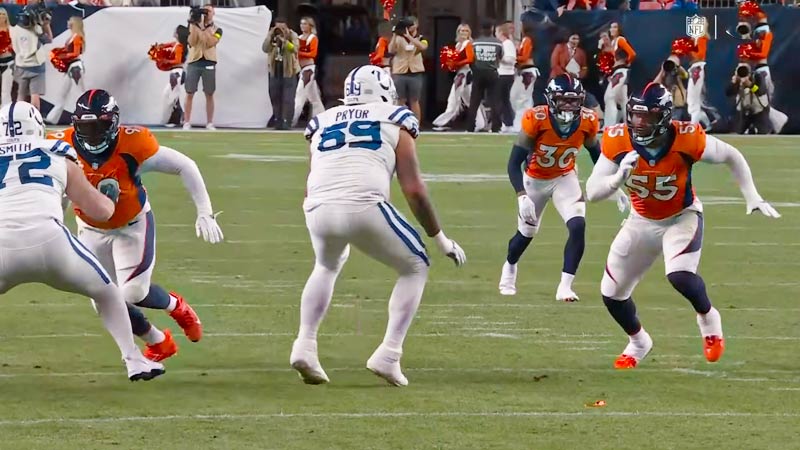
Strong safety (SS) is a key position within the defensive backfield in American Football.
Strong safeties play a versatile and physical role, combining coverage skills with tackling ability to contribute to both pass defense and run support. Here’s an overview of the responsibilities and attributes of strong safety:
Coverage Skills
Strong safeties need solid coverage skills to defend against passes, particularly when covering tight ends, and slot receivers, and providing support over the middle of the field.
Zone Coverage
They often play a pivotal role in zone coverage, patrolling the middle of the field and helping to defend against intermediate passes.
Man Coverage
In certain situations, strong safeties may be tasked with covering tight ends or slot receivers in man-to-man situations.
Run Support
Strong safeties are known for their ability to provide support against running plays. They come down to the line of scrimmage to assist in tackling ball carriers, particularly in outside runs or plays between the tackles.
Tackling
A strong safety must be a reliable tackler, capable of bringing down both ball carriers and receivers after the catch. They often need to shed blockers and make open-field tackles.
Blitzing
Strong safeties are occasionally used as blitzers, adding pressure on the quarterback by rushing from the secondary.
Physicality
Physicality is a hallmark of strong safety. They must be able to shed blocks, engage in collisions, and deliver impactful hits to disrupt plays.
Ball Skills
While not always their primary focus, strong safeties should possess good ball skills to capitalize on interception opportunities.
Recognition and Read Skills
They need to quickly read offensive plays, recognize run-pass options, and adjust their positioning accordingly.
Versatility
Strong safeties are often moved around the defensive formation, adjusting their alignment based on offensive sets and play calls.
Essential Skills for Success in the Defensive Backfield
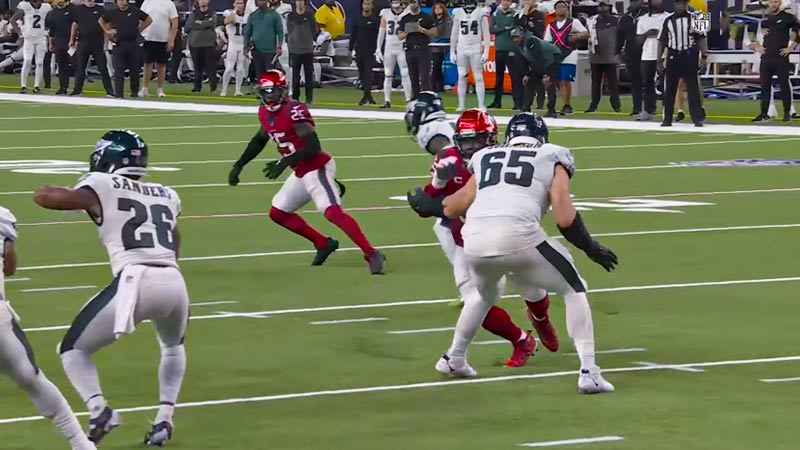
Success in the defensive backfield in American Football requires a combination of skills that allow players to effectively cover receivers, disrupt passing plays, and support the run defense. Here are the essential skills for success in the defensive backfield:
Coverage Techniques
Mastery of various coverage techniques, including man-to-man, zone, and press coverage, is crucial to limit receivers’ effectiveness and disrupting passing routes.
Footwork
Quick and precise footwork helps defensive backs maintain proper positioning, change direction swiftly, and keep up with agile receivers.
Speed and Agility
Defensive backs need to be fast and agile to cover ground, close gaps, and react to sudden changes in direction by the offense.
Ball Skills
The ability to track the ball in the air, make interceptions, and deflect passes is essential for creating turnovers and preventing completions.
Tackling
Strong tackling skills are necessary to bring down ball carriers and prevent yards after the catch, especially when supporting the run defense.
Physicality
Defensive backs must possess the right balance of physicality to disrupt routes and engage receivers while avoiding penalties.
Anticipation
Reading the quarterback’s eyes, recognizing offensive patterns, and anticipating routes are crucial for getting into position to make plays.
Recovery Skills
When initially beaten by a receiver, the ability to recover quickly and still contest the pass is a valuable trait.
Football IQ
A deep understanding of offensive formations, tendencies, and situational awareness helps defensive backs make informed decisions on the field.
Communication
Clear and effective communication with teammates is vital for coordinating coverage assignments, adjustments, and play calls.
Preparation
Studying opponents’ game tape and understanding their tendencies helps defensive backs anticipate plays and make informed decisions.
Confidence and Resilience
Defensive backs need mental toughness to bounce back from plays where they’re beaten and maintain confidence throughout the game.
Versatility
The ability to play multiple roles within the defensive scheme, such as covering different positions or contributing to run support, adds to a player’s value.
Reaction Time
Quick decision-making and reacting promptly to changing situations are critical for successful plays in the defensive backfield.
Film Study
Analyzing game film helps defensive backs recognize opponents’ tendencies, routes, and playcalling, giving them a strategic edge.
Situational Awareness
Down and distance, game clock, and field position help defensive backs tailor their coverage to the situation.
Discipline
Maintaining discipline in coverage and avoiding unnecessary penalties is crucial to prevent giving the offense free yardage.
Leadership
Strong leaders within the defensive backfield can help coordinate coverage, offer guidance to younger players, and foster cohesion.
Players who can excel in coverage, tackling, and various defensive roles while maintaining strong communication and adaptability are invaluable assets to their teams.
FAQs
What is the defensive backfield in football?
The defensive backfield refers to the group of defensive players known as defensive backs (DBs), which includes cornerbacks and safeties. These players are primarily responsible for covering wide receivers, and tight ends, and preventing successful passing plays by intercepting or deflecting the ball.
What are the roles of cornerbacks in the defensive backfield?
Cornerbacks are tasked with covering wide receivers, disrupting routes, and preventing successful passes downfield. They utilize techniques like man-to-man coverage, zone coverage, and press coverage to neutralize passing threats and create turnovers.
What is the role of strong safety in the defensive backfield?
A strong safety plays a versatile role, providing support in both pass defense and run support. They cover intermediate routes, support against the run, tackle ball carriers, and sometimes blitz the quarterback to apply pressure.
What skills are essential for success in the defensive backfield?
Success in the defensive backfield demands a combination of skills, including coverage techniques, footwork, speed, agility, ball skills, tackling ability, anticipation, communication, and football IQ. Mental toughness, adaptability, and preparation also play crucial roles.
How does the defensive backfield contribute to the team’s success?
The defensive backfield is the last line of defense against opponents’ passing attacks. By preventing big plays, creating turnovers, and effectively covering receivers, they not only thwart scoring opportunities but also shift momentum in favor of their team.
Wrapping Up
The football defensive backfield embodies the epitome of versatility and strategy, combining physical prowess with mental acumen to create an impenetrable barrier against the opposing team’s aerial assault.
From cornerbacks blanketing receivers to strong safeties offering a blend of coverage and run support, the defensive backfield’s impact on the game cannot be overstated.
As we’ve journeyed through the intricate roles, skills, and significance of this dynamic unit, it becomes clear that the defensive backfield is more than just a part of the defense – it’s a cornerstone of a well-rounded and successful football team. Thank you so much.

